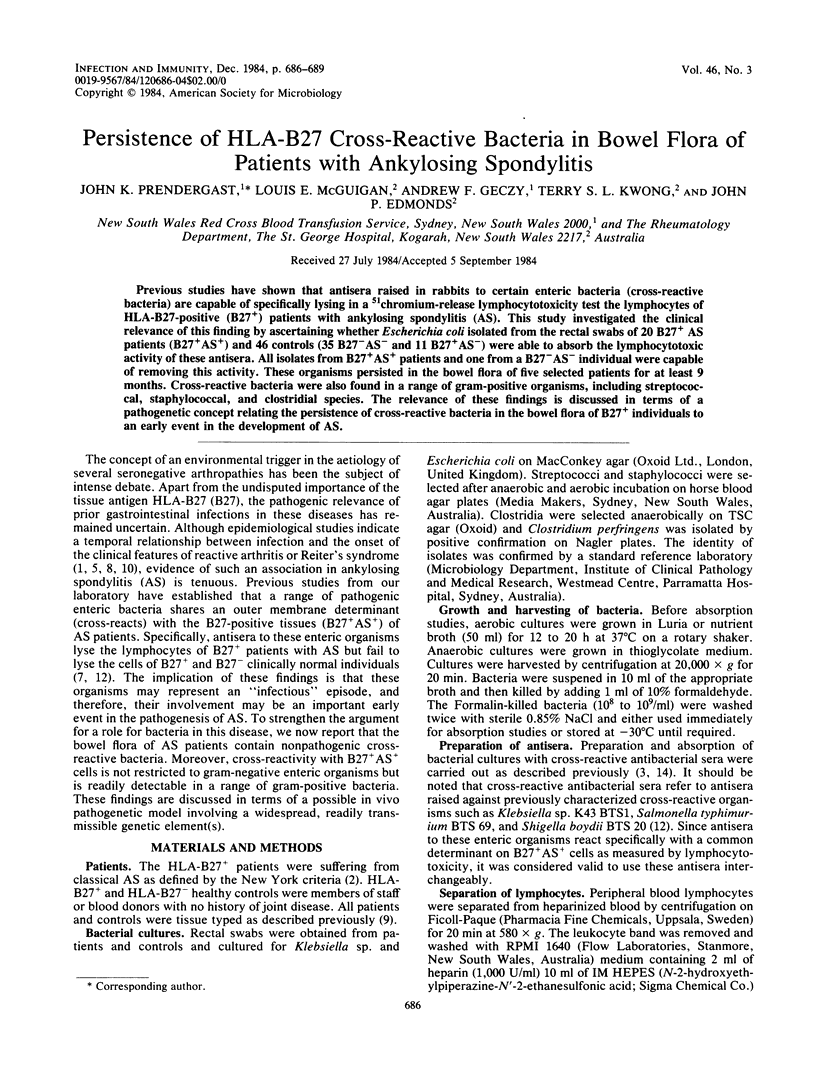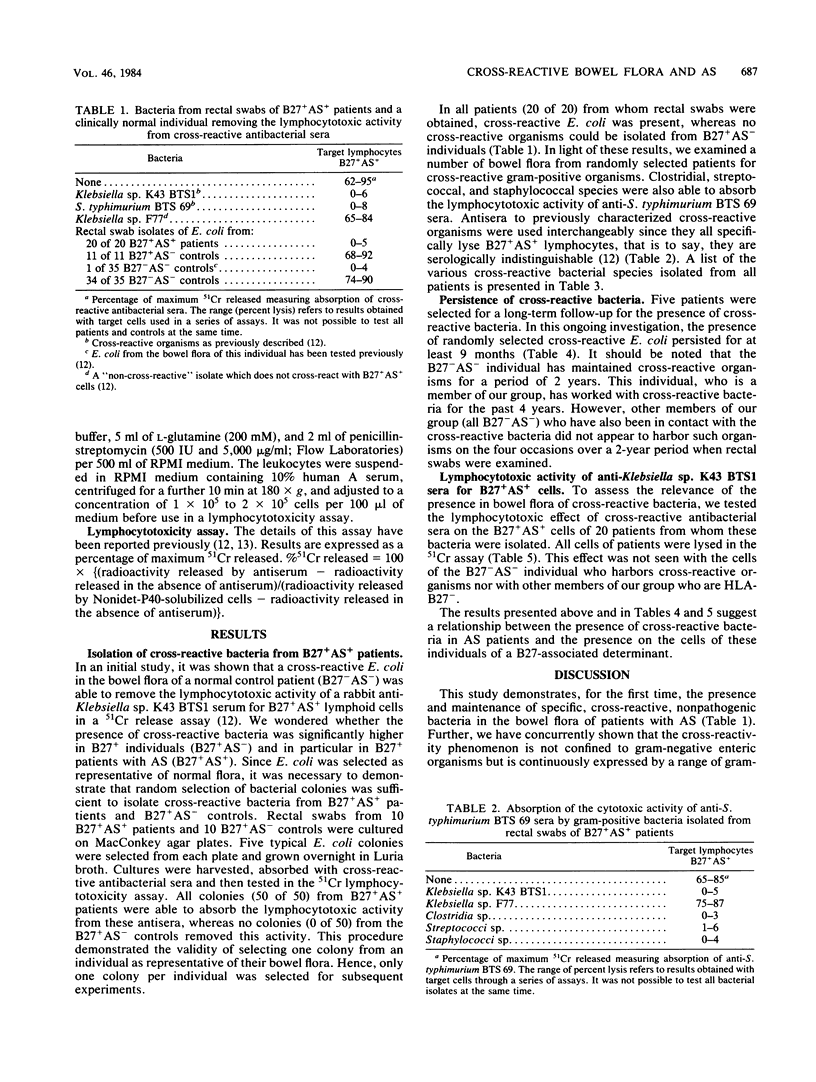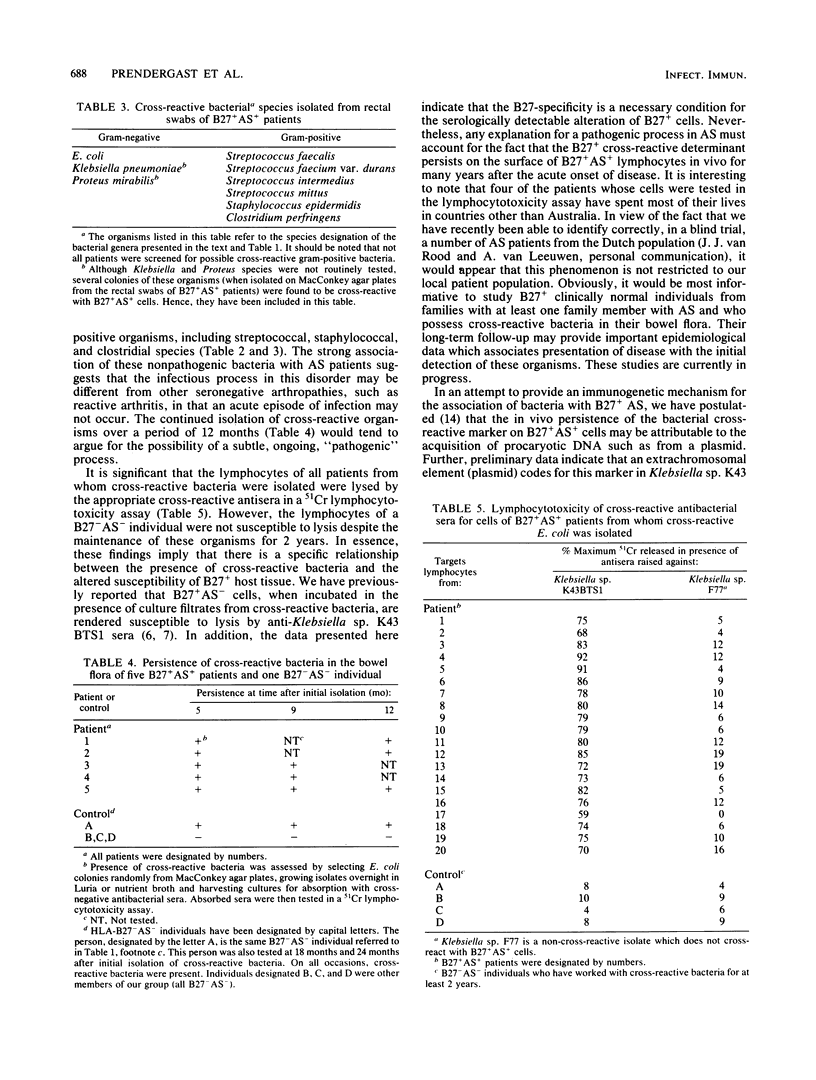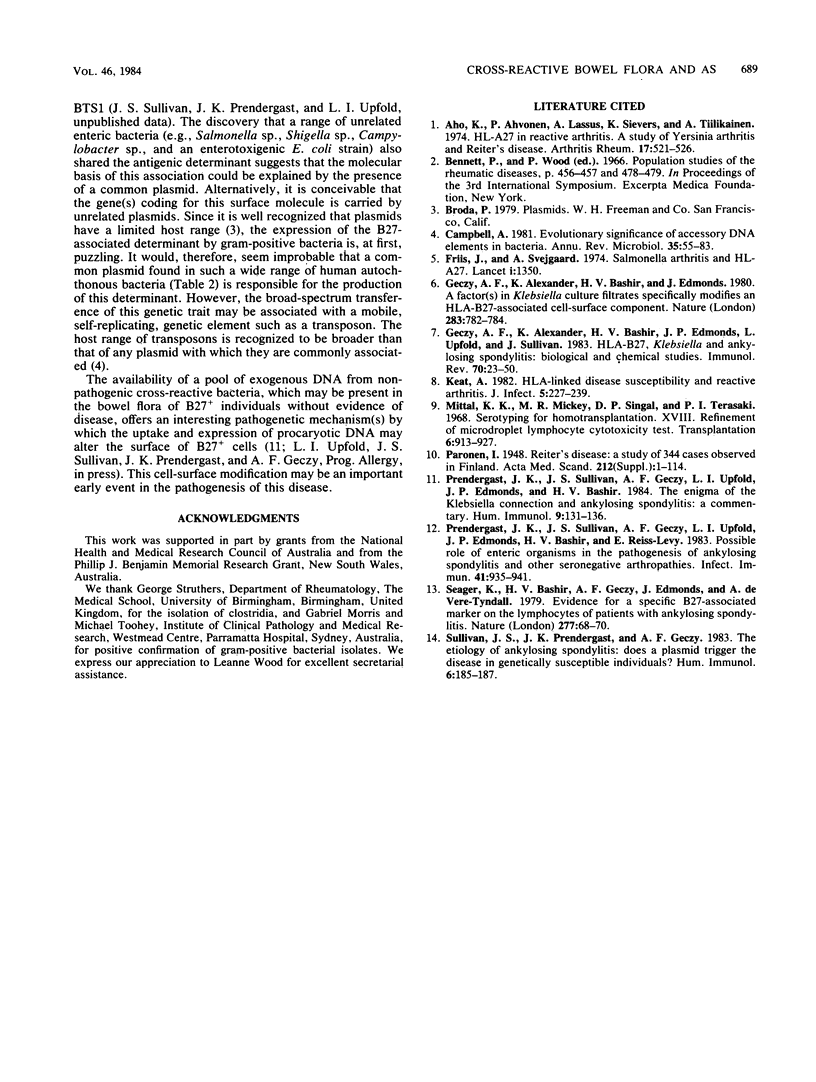Abstract
Previous studies have shown that antisera raised in rabbits to certain enteric bacteria (cross-reactive bacteria) are capable of specifically lysing in a 51chromium-release lymphocytotoxicity test the lymphocytes of HLA-B27-positive (B27+) patients with ankylosing spondylitis (AS). This study investigated the clinical relevance of this finding by ascertaining whether Escherichia coli isolated from the rectal swabs of 20 B27+ AS patients (B27+ AS+) and 46 controls (35 B27- AS- and 11 B27+ AS-) were able to absorb the lymphocytotoxic activity of these antisera. All isolates from B27+ AS+ patients and one from a B27- AS- individual were capable of removing this activity. These organisms persisted in the bowel flora of five selected patients for at least 9 months. Cross-reactive bacteria were also found in a range of gram-positive organisms, including streptococcal, staphylococcal, and clostridial species. The relevance of these findings is discussed in terms of a pathogenetic concept relating the persistence of cross-reactive bacteria in the bowel flora of B27+ individuals to an early event in the development of AS.
Full text
PDF



Selected References
These references are in PubMed. This may not be the complete list of references from this article.
- Aho K., Ahvonen P., Lassus A., Sievers K., Tiilikainen A. HL-A 27 in reactive arthritis. A study of Yersinia arthritis and Reiter's disease. Arthritis Rheum. 1974 Sep-Oct;17(5):521–526. doi: 10.1002/art.1780170505. [DOI] [PubMed] [Google Scholar]
- Campbell A. Evolutionary significance of accessory DNA elements in bacteria. Annu Rev Microbiol. 1981;35:55–83. doi: 10.1146/annurev.mi.35.100181.000415. [DOI] [PubMed] [Google Scholar]
- Friis J., Svejgaard A. Letter: Salmonella arthritis and HL-A27. Lancet. 1974 Jun 29;1(7870):1350–1350. doi: 10.1016/s0140-6736(74)90726-0. [DOI] [PubMed] [Google Scholar]
- Geczy A. F., Alexander K., Bashir H. V., Edmonds J. P., Upfold L., Sullivan J. HLA-B27, Klebsiella and ankylosing spondylitis: biological and chemical studies. Immunol Rev. 1983;70:23–50. doi: 10.1111/j.1600-065x.1983.tb00708.x. [DOI] [PubMed] [Google Scholar]
- Geczy A. F., Alexander K., Bashir H. V., Edmonds J. A factor(s) in Klebsiella culture filtrates specifically modifies an HLA-B27 associated cell-surface component. Nature. 1980 Feb 21;283(5749):782–784. doi: 10.1038/283782a0. [DOI] [PubMed] [Google Scholar]
- Mittal K. K., Mickey M. R., Singal D. P., Terasaki P. I. Serotyping for homotransplantation. 18. Refinement of microdroplet lymphocyte cytotoxicity test. Transplantation. 1968 Nov;6(8):913–927. doi: 10.1097/00007890-196811000-00006. [DOI] [PubMed] [Google Scholar]
- Prendergast J. K., Sullivan J. S., Geczy A. F., Upfold L. I., Edmonds J. P., Bashir H. V. The enigma of the Klebsiella connection and ankylosing spondylitis: a commentary. Hum Immunol. 1984 Mar;9(3):131–136. doi: 10.1016/0198-8859(84)90040-5. [DOI] [PubMed] [Google Scholar]
- Prendergast J. K., Sullivan J. S., Geczy A., Upfold L. I., Edmonds J. P., Bashir H. V., Reiss-Levy E. Possible role of enteric organisms in the pathogenesis of ankylosing spondylitis and other seronegative arthropathies. Infect Immun. 1983 Sep;41(3):935–941. doi: 10.1128/iai.41.3.935-941.1983. [DOI] [PMC free article] [PubMed] [Google Scholar]
- Seager K., Bashir H. V., Geczy A. F., Edmonds J., de Vere-Tyndall A. Evidence for a specific B27-associated cell surface marker on lymphocytes of patients with ankylosing spondylitis. Nature. 1979 Jan 4;277(5691):68–70. doi: 10.1038/277068a0. [DOI] [PubMed] [Google Scholar]
- Sullivan J. S., Prendergast J. K., Geczy A. F. Hypothesis: the etiology of ankylosing spondylitis: does a plasmid trigger the disease in genetically susceptible individuals? Hum Immunol. 1983 Apr;6(4):185–187. doi: 10.1016/0198-8859(83)90091-5. [DOI] [PubMed] [Google Scholar]


